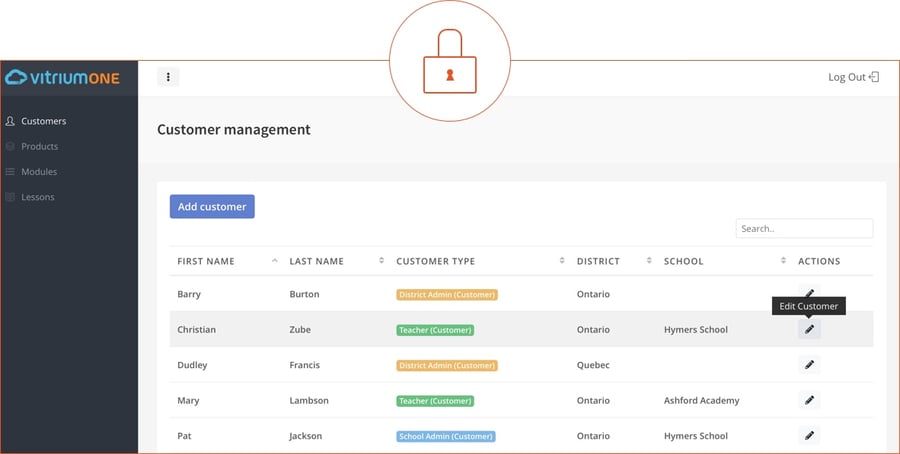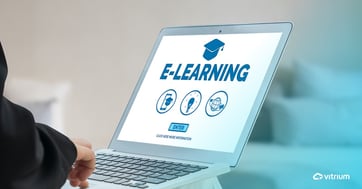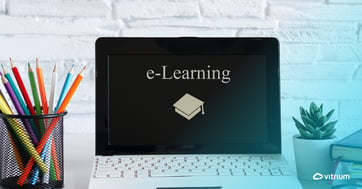If you're an educational content provider, you might need a secure Content Distribution System instead of a Learning Management System (LMS).
How to Distribute Your Digital Content Through the Hierarchy of the School System
Prior to settling on a preferred method of content distribution, educational content providers must first understand the levels of hierarchy in a typical K-12 (or primary/secondary) school system. Once you have fully understood how content is disseminated through the different hierarchical levels that make up the school system, you can then decide what the best option for delivering your material is.
In the United States and Canada, the hierarchy is as follows: School districts disseminate information to schools (elementary, middle school or junior high, and high school). The schools then make certain content available to teachers depending on grade levels and/or subjects they teach, and finally, the teachers provide the content they receive to their students (if the content was intended to be delivered to the students).

In the United Kingdom and Europe, it looks very similar, however there is a slight alteration in titles: School councils transfer information to schools (primary and secondary), who then distribute it to teachers accordingly, and lastly teachers provide content to their students (again, if the content was intended to be delivered to the students).
In both the US and Canada, as well as in the UK and Europe, the people that are responsible for creating the content and who ultimately purchase the content appear to be the same. Based on our research, it seems that in most cases, the school districts/councils make the decisions on curriculum creation and the procurement of educational content. However, sometimes individual schools, and on occasion, the teachers themselves purchase content for specialized or localized purposes.
Traditionally, the school districts/councils and schools have been in charge of purchasing educational material. The content provider would then sell and ship physical copies of their product to the schools or districts. This scheme made the licensing process quite straightforward, as the school districts would only receive the amount of copies they needed. Document protection was not necessarily an issue to consider, as the only way to share the educational content with someone who did not have a licensed copy of a textbook or workbook, for example, was to photocopy the entire book. This process was cumbersome and time-consuming, and not suited for mass reproduction and distribution.
Things have changed considerably since the Spring of 2020. The COVID-19 pandemic hit North America and Europe quite suddenly and, as a result, schools were no longer able to work with physical copies of the products sold by educational content providers. The transition was made to online education, classrooms moved to the digital realm, and schools required digital content to be provided in place of its physical counterpart.

As eLearning became the primary method of instruction, content providers were struggling to solve the issue of switching to a digital distribution method while still protecting their intellectual property (IP). Evidently, document protection is much more difficult to guarantee when working with the digital format rather than the physical copy of a book. As opposed to photocopying hundreds of pages, sharing a PDF file of a digital eBook is as easy as sending an email, or sharing it on a social media site, or uploading it to a school district’s network.
With digital content being at such high risk of mass copying and redistributing, how can you ensure the school districts/councils are properly licensing your product rather than buying one or two single licensed copies that may then end up being shared among all their schools, teachers, and students? Furthermore, how can content providers maintain control of their licensed material all the way down the hierarchy of the school system?
While content distribution, storage, and access have indeed changed, the transition to a digital platform does not have to be a complicated process. Moreover, you do not have to relinquish control of your content. VitriumOne, a solution powered by Vitrium's digital rights management (DRM) technology and delivered by its partner, Blue Flamingo, is the ideal content distribution system (CDS) that answers all these questions. It helps you solve the challenges presented by the unavoidable shift to digital education, making the transition as simple and smooth as possible, while guaranteeing security for your content and, ultimately, your intellectual property. 
Vitrium and Blue Flamingo have partnered together to combine digital rights management (DRM) and digital enablement into one system. Tailored specifically for educational content providers, VitriumOne merges Vitrium’s encryption and DRM technology on the back-end, with a flexible and well-designed web application built by Blue Flamingo. This offers the perfect balance of seamless content distribution through the hierarchy of the K-12 (primary/secondary) school system and ironclad protection, allowing you to easily disseminate your educational material while still protecting your intellectual property and, consequently, your revenue.
Learn more about how VitriumOne can help you protect and distribute your educational content by Requesting a demo today!





